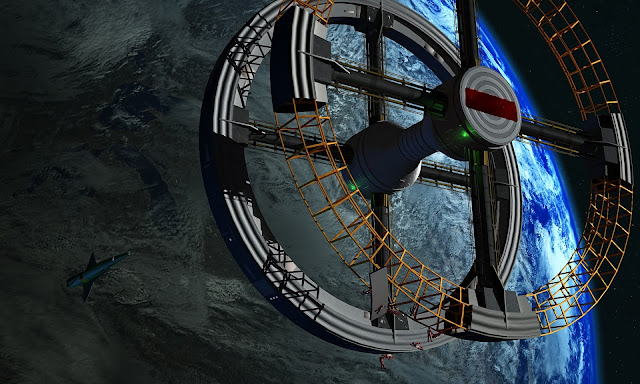Talavera, the capital of the Empire of my Church and Empire setting, is a large planet with vast oceans. The UPP is A-969835-F, and 947 million people. But how much room do they actually have for a billion people?
Size 9: 9,000 mile diameter
Hydro 9: 90% of the planet is oceans
I had an initial idea of a densely populated island, where the buildings reach high into the sky to make room for nearly a billion people.
Then I did some math. What I found was, to say the least, not that dramatic.
Talavera has 25,446,900 square miles of land area. Spread 947,000,000 people over that and you get a population density of 37.215 ppl/mi^2.
According to this table of population densities of countries, that's less than Norway or Sweden. Neither are the sorts of places you think of when you think of dense populations. China, at 378 ppl/mi^2 is ten times denser. 25 million square miles is several times the size of Russia.
| Size Code | Diameter | Radius | Total Area | Hydrographic-5 | |||
| 0 | 500.0 | 250.0 | 785,398.2 | 392,699.1 | |||
| 1 | 1,000.0 | 500.0 | 3,141,592.7 | 1,570,796.4 | |||
| 2 | 2,000.0 | 1,000.0 | 12,566,370.8 | 6,283,185.4 | |||
| 3 | 3,000.0 | 1,500.0 | 28,274,334.3 | 14,137,167.2 | |||
| 4 | 4,000.0 | 2,000.0 | 50,265,483.2 | 25,132,741.6 | |||
| 5 | 5,000.0 | 2,500.0 | 78,539,817.5 | 39,269,908.8 | |||
| 6 | 6,000.0 | 3,000.0 | 113,097,337.2 | 56,548,668.6 | |||
| 7 | 7,000.0 | 3,500.0 | 153,938,042.3 | 76,969,021.2 | |||
| 8 | 8,000.0 | 4,000.0 | 201,061,932.8 | 100,530,966.4 | |||
| 9 | 9,000.0 | 4,500.0 | 254,469,008.7 | 127,234,504.4 | |||
| 10 (A) | 10,000.0 | 5,000.0 | 314,159,270.0 | 157,079,635.0 | |||
| Russia | 6,601,670 | ||||||
| China | 3,600,950 | ||||||
| Canada | 3,511,023 | ||||||
| USA | 3,531,925 | ||||||
| Brazil | 3,266,584 | ||||||
| Australia | 2,947,336 | ||||||
| Texas | 261,231 | ||||||
| California | 155,779 | ||||||
| New York | 47,126 |

